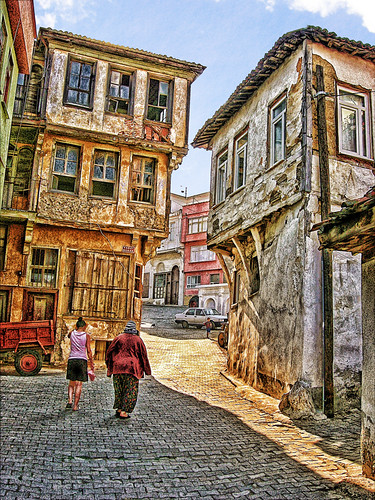
It should not be surprising that all things Hispanic are referred to as "Latin," since up until around the beginning of the Fifth Century AD, Spain was the crown jewel of the Roman Empire; Spanish is simply the Latin tongue as it has evolved and changed over the centuries (with a few influences from Gothic and Arabic). Likewise, the architecture of Spain owes a great deal to that of the Romans, who in turn were heavily influenced by the Greeks. At its height in the 16th and 17th Centuries, the Spanish Empire spanned the globe - which is why clay roof tiles are found almost everywhere their galleons sailed. In the U.S., Spanish-roof-tiles are most commonly found in former colonies such as Southern California, Florida and Puerto Rico.
Where Spanish-Roof-Tiles Come From
The origin of terra cotta roofing tiles cannot be pinpointed; it was an innovation that seems to have emerged in several places over the course of as many centuries, primarily in drier, hotter regions. In the Mediterranean, it was inhabitants of what is now Greece who first developed clay roofing tiles. Hellenistic culture was spread directly and indirectly (via the Romans) from western India to northern Britain. The villas of wealthy Romans were covered in terra cotta roofing tiles in virtually every province. Iberia (present-day Spain and Portugal) was home to many of Rome's elite, and today's roof tiles still resemble those of fine Roman houses in ancient Hispania and Lusitania.
Over the next several centuries, Spain was invaded by from Scandinavia and Moors from North Africa, both of which left their mark; after more than 1000 years under these influences, what emerged was an empire whose soldiers, merchants and other emissaries introduced Spanish roof tiles to the world. For three centuries between 1500 and 1800, the conquistadores and the settlers who followed them established colonies in the Americas, the Caribbean and the Philippines - where homes sporting these distinctive terra cotta roofing tiles are still around.
How Clay Roof Tiles Are Made
Clay roofing tiles such as roof-tiles are similar to a piece of commercial pottery; the clay is placed in a mold (this is necessary so that the tiles fit together properly) and allowed to dry, then fired in a kiln. Today, the material receives special treatments for that the tiles can be used on homes in climates not normally suitable to such roofs. Today's clay roof tiles come in three grades, the highest and most expensive being suited for Canadian winters; the lowest and least expensive Spanish roof tiles are for homes in warm desert and Mediterranean climates. Thanks to these techniques, spanish clay roof tiles can be used on homes virtually anywhere in the world.
Wayne Hemrick writes about--Spanish Clay Roof Tiles.